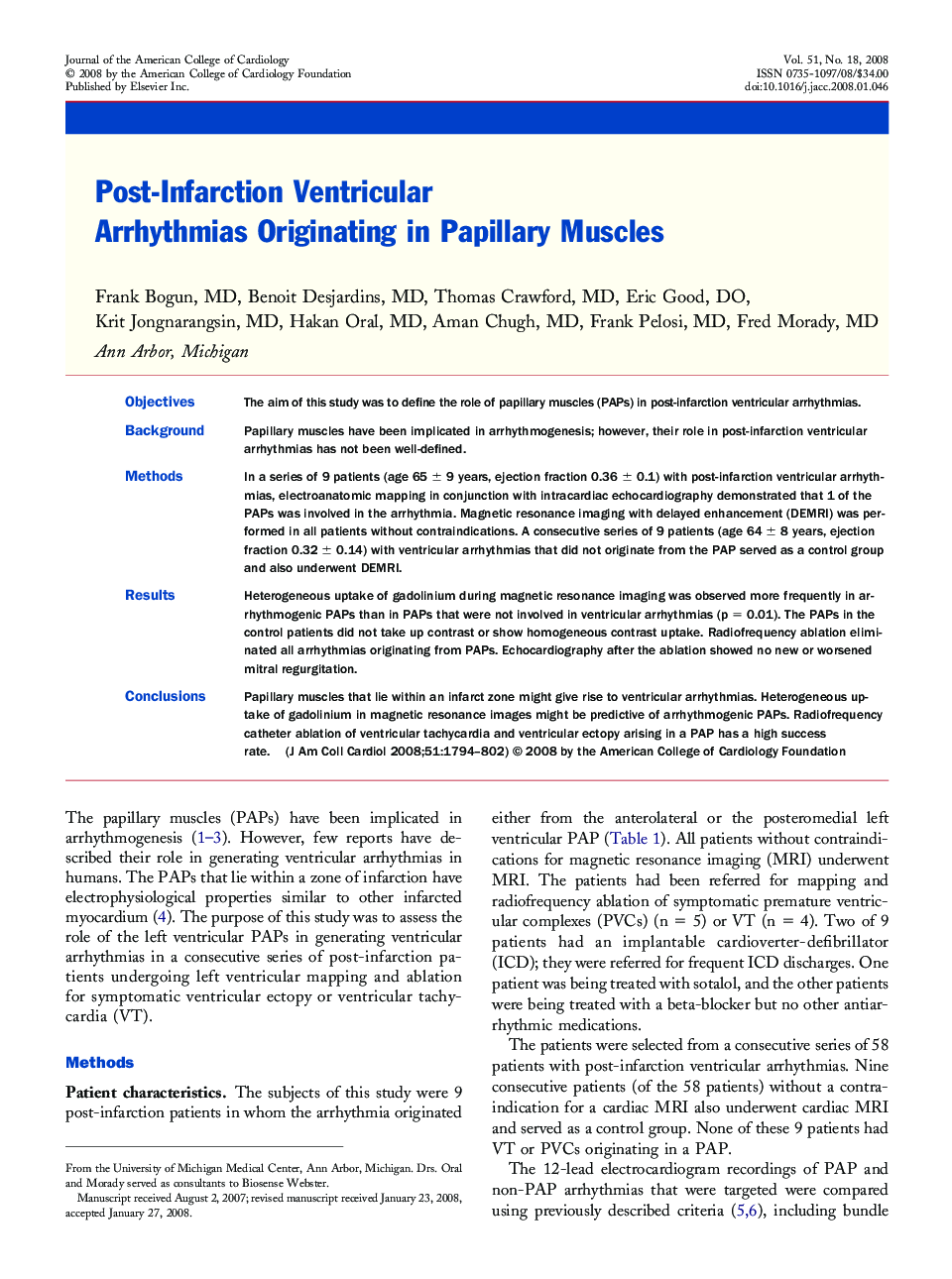| Article ID | Journal | Published Year | Pages | File Type |
|---|---|---|---|---|
| 2952299 | Journal of the American College of Cardiology | 2008 | 9 Pages |
ObjectivesThe aim of this study was to define the role of papillary muscles (PAPs) in post-infarction ventricular arrhythmias.BackgroundPapillary muscles have been implicated in arrhythmogenesis; however, their role in post-infarction ventricular arrhythmias has not been well-defined.MethodsIn a series of 9 patients (age 65 ± 9 years, ejection fraction 0.36 ± 0.1) with post-infarction ventricular arrhythmias, electroanatomic mapping in conjunction with intracardiac echocardiography demonstrated that 1 of the PAPs was involved in the arrhythmia. Magnetic resonance imaging with delayed enhancement (DEMRI) was performed in all patients without contraindications. A consecutive series of 9 patients (age 64 ± 8 years, ejection fraction 0.32 ± 0.14) with ventricular arrhythmias that did not originate from the PAP served as a control group and also underwent DEMRI.ResultsHeterogeneous uptake of gadolinium during magnetic resonance imaging was observed more frequently in arrhythmogenic PAPs than in PAPs that were not involved in ventricular arrhythmias (p = 0.01). The PAPs in the control patients did not take up contrast or show homogeneous contrast uptake. Radiofrequency ablation eliminated all arrhythmias originating from PAPs. Echocardiography after the ablation showed no new or worsened mitral regurgitation.ConclusionsPapillary muscles that lie within an infarct zone might give rise to ventricular arrhythmias. Heterogeneous uptake of gadolinium in magnetic resonance images might be predictive of arrhythmogenic PAPs. Radiofrequency catheter ablation of ventricular tachycardia and ventricular ectopy arising in a PAP has a high success rate.
